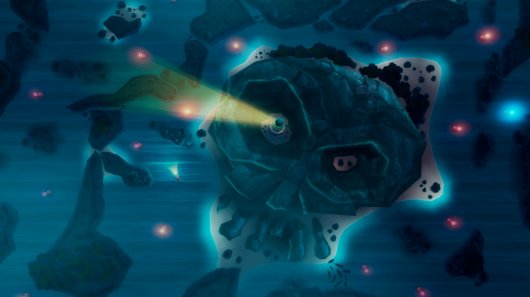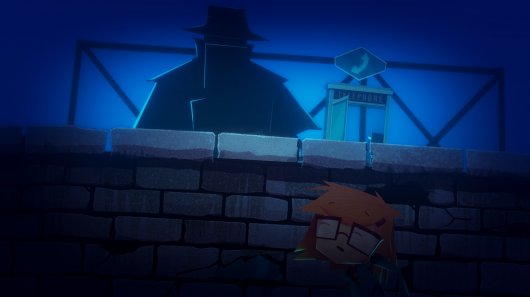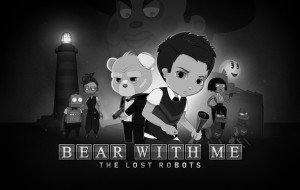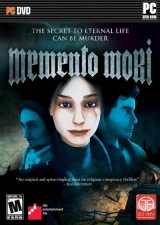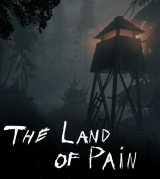Review for Jenny LeClue – Detectivú
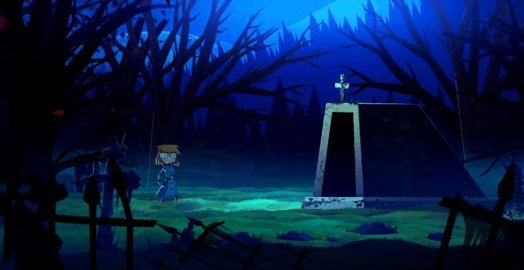
Note: In July 2020, an update introduced full voice acting to the game. This review is based solely on the initial launch version.
Move over Nancy Drew, there’s a new titian-haired sleuth on the case in Jenny LeClue – Detectivú. Mografi’s side-scrolling adventure follows two stories, one of longtime author Arthur K. Finklestein and another of his creation and heroine of 38 books, the eponymous Jenny. With sales flagging, Arthur’s been given orders by his editor to introduce intrigue, drama and even a murder or two into his otherwise staid and saccharine formula. What follows is by turns funny, tense, mysterious and sincere. Rarely have I played a game that actually moves me, but this one joins those exalted ranks.
Sometimes you get a good feeling about a story right from the off. When the game opened with a mysterious man in black eerily whistling into the night, walking down to the lake near Arthurton, the fictional town where Jenny lives, before disappearing into a submerged structure accompanied by dramatic camera moves and music, I got that this-is-gonna-be-good feeling. That sensation never went away, and indeed only grew right up to the closing moments. But I’m getting ahead of myself.
Arthur Finklestein has been writing Jenny LeClue books for many years. Jenny is his protagonist, a young bespectacled girl with a toothy grin who’s always up for a mystery. However, Arthurton is a place of sunshine and rainbows, figuratively speaking, where nothing bad ever happens and Jenny’s greatest cases run along the lines of The Case of the Missing Marmalade Sandwich, The Case of the Misplaced Papers, and The Case of the Missing Glasses. Now Arthur’s boss is bombarding him with threats to end their publishing contract unless Arthur injects some actual intrigue and drama into his newest story.
Arthur is less than pleased with some talentless hack telling him how to create. His immediate response? He kills Jenny! But not really, or else that would make for a very short game, which at ten hours this is anything but. No, Jenny’s mother, a former detective in her own right who now teaches criminology at the local university, is merely using her daughter as a body in a staged crime scene for her students to examine. Jenny has little patience for the older students and solves her own “murder” when she’s really just supposed to be lying there dead.
From there the premise becomes even more intriguing. Arthur initially struggles to bring any sort of real conflict to Jenny’s world. Meanwhile, young Jenny is only too eager to find a real case to prove that she’s a great detective not only to herself but to her mother. Early on, Jenny gets bait-and-switched a couple of times by her creator as people bring her cases that sound initially important but almost immediately are proven to be more of the same mundane drivel that Arthur has been producing for years.
Things change when Jenny searches the university library for her mother only to discover Dean Les Strausberry dead (The Case of the Dead Dean, The Case of a Lifetime, according to Jenny). Events snowball from there with Jenny’s mother accused of the murder, the town’s curfew being extended due to mysterious blackouts, a potentially sinister conspiracy lurking in the background, and Jenny’s own struggle to discover who she is as a person.
While most of the action is centered on Jenny, dialog from Arthur pops up on a regular basis as he interjects prose descriptions of the locations his heroine visits, the people she meets, and the things she does. Usually after some major discovery or twist in the story, the focus returns to the author to show how increasingly worked up he’s getting about being forced to abandon his traditional writing formula. Arthur and Jenny also have occasional back-and-forths that suggest, as with most writers, his creation has effectively taken on a life of her own. For instance, when Jenny needs to use an electrical breaker, Arthur protests that electricity is dangerous and shouldn’t be played with, to which Jenny argues it’s just a switch before proceeding to flip it.
Jenny is a flawed character, which makes her all the more interesting and an excellent protagonist. She so desperately wants to prove herself and considers herself so much cleverer than everyone else that she has difficulty asking for help when she needs it. She’s fiercely dependent on coffee. She’s afraid of the dark. She has difficulty making and keeping friends. And she’s dealing with the loss of her father from a year earlier. Jenny LeClue has to face all of these issues and more over the course of her adventure, which really humanizes her in a way that drew me in.
The young protagonist's world is populated by a number of eccentric characters. There’s C.J., Arthurton’s resident conspiracy theorist and U.F.O. nut who likes to make dramatic pronouncements and throw his arms around in crazy fashion. He’s one of Jenny’s few friends and the pair share code phrases to prove who they are to each other along the lines of “The dog barks loudest before the dawn,” and “The early bird can’t catch the lazy worm.” The exchange of such phrases is repeated several times during the game, which makes for some nice little interplay between the two.
Then there’s Keith Strausberry, son of the deceased and Jenny’s friend since they were young. Keith doesn’t say much, which is perhaps why Jenny likes him. He listens to her as she speaks of the mysteries and adventures she goes on. Of course, she could also like him because he works for the local Mr. Beans coffee shop. I felt for Jenny as she drifted away from Keith after Jenny’s mother is accused of killing Keith’s father and things take a turn for the worse.
I felt even more for Jenny and Suzie Glatz. Suzie is the most popular girl in school and Jenny’s cousin. In his writings, Arthur wants and expects Jenny and Suzie to become best friends, but although Suzie is always trying to be helpful, Jenny is always pushing her away. It really feels emotionally satisfying when Suzie stands up for herself and Jenny…well, you’ll have to play the game to see for yourself. No spoilers here.
The characters and their relationships aren’t the only source of emotional resonance in the game. Scattered throughout are dialog choices where you can decide such things as whether to promise to keep the deep, dark secret that Suzie reveals to Jenny or using that secret to blackmail her to help. While the choices don’t cause any major shifts in how the story unfolds, they do help customize the experience for a more personal playthrough. Late in the game, when Arthur is forced by his editor to inflict tragedy on a character, he leaves the decision to “fate.” Fate, in this case, is you. I actually found it legitimately difficult to decide who should suffer (note: nobody is not an option).
All player choices are recorded in Jenny’s journal, which also serves as a repository for notes on story progression and displays of additional collectible items such as stickers and postcards. At any time your decisions can be reviewed, and they are accompanied by a small psychoanalysis chart indicating such things as how empathetic Jenny is, how logical, and how much of a planner. This has no bearing on the events that transpire but I found it to be a welcome touch.
Jenny LeClue is not just a compelling character-driven drama, however, it’s also a good detective game. Once Arthur moves past his initial resistance to bringing problems to Jenny’s world, the mystery of the dean’s death gets more and more layered and the locations Jenny visits to solve it get darker and darker. Her investigation begins near the university, which is brightly lit by warm sunshine and filled with trees of vibrant fall colours. As Jenny digs deeper, she visits the mysterious glowing lake of Arthurton at sunset, Suzie’s creepy (in an overly-cheerful-pink-fluffy-animal-sort-of-way) rooms at Glatz manor, the town cemetery at night, an oppressively claustrophobic mine where the ethereal spirits of dead miners still haunt the tunnels, and other such esoteric locations.
Each setting has its own lighting effects, which are reflected on Jenny and other characters as well, seamlessly integrating them into the environments. These locales are further brought to life through various background animations such as birds flying, leaves falling, ravens cawing when Jenny gets too close, and large fish swimming in the lake, seen only by their silhouettes. Everything is beautifully presented across a series of 2D planes, with parallax scrolling used to provide depth.
Character models have something of a polygonal nature, feeling a little bit like paper cutouts, but it’s amazing how much personality has been wrung out of such simple designs. Jenny in particular has a wide range of facial expressions, from her accusatory stare when she’s interrogating a suspect, to her open-mouthed toothy grin when she’s excited. I especially liked how she crisply snaps her journal shut when she’s about to solve a case. Even when she’s just standing in one place, her eyes dart about and she moves subtly. Another nice detail is that Jenny changes clothes several times during the game. Other characters are similarly well-served. My heart went out to poor Suzie whenever she looked downcast from Jenny trampling over her emotions, while C.J.’s wild gesticulating – vaguely reminiscent of Stan from the Monkey Island games – put a smile on my face.
A lot of attention was clearly paid to the various investigation mechanics used throughout. Jenny primarily moves through her environment left and right via the keyboard or a game controller. When she gets near a point of interest, a diamond appears along with a small text label indicating how she can interact with it, such as interrogating a suspect or examining a crime scene in greater detail. Selecting a context-appropriate action then shifts the view to a close-up with its own custom interface.
For interrogations, Jenny has to identify oddities about the person she’s facing, such as trace remains of a substance on a bow tie or a piece of paper protruding from a pocket. Finding one of these temporarily pops the view back out to the wide angle where Jenny confronts the person about whatever she found. This usually leads to some manner of dialog choice to shape the scene. It’s a refreshingly different approach to interrogations than most detective games.
Detailed views of crime scenes bring up another diamond that can be moved around freely. The diamond goes solid when over a clue and a certain number of them must be found to complete the investigation. Rather than a pixel hunting exercise, the crime scenes are illustrated in such a way that it’s possible to discern the important areas without a lot of tedious trawling.
Jenny’s detective skills aren’t just about finding hotspots, though. From time to time she’ll have to break into closets, rooms and even a cemetery using her lockpick to find the sweet spot and then force the tumbler. She’s also got a future as an electrician as there are a handful of instances in which she must correctly align wires in machines to get them working again. Additionally, a few radios in the game must be adjusted to hear coded messages, which can then be decoded with help from the correct item containing key text. Challenges such as these take the place of traditional inventory-based puzzles and make up a good portion of the investigatory gameplay.
Outside of close-ups, Jenny can walk and run around her environment. Occasionally she might have to jump from one area to another, which is always clearly indicated by on-screen prompts. Or she may have to push or drag barrels or boxes that she can climb onto to reach higher areas. These never feel like platformer challenges, since Jenny can never fall from a precipitous height. Instead she’ll stumble right at the edge as a tense heartbeat sound kicks in before slowly winding down after a few moments. The game strikes just the right balance between environmental navigation challenges and its other investigation mechanics, never leaving you feeling like you’re stuck doing one repetitive action all the time.
Just as the environments feature a healthy dose of animation to bring them to life, they are supported by similarly appropriate ambient sounds. The friendly chirp of birds, the rumble of a motorboat as Jenny speeds across the lake, the clatter of mine carts being pushed around, the mechanical beeps and boops and wheezes and thunks of machines being used all add up to ensure immersion in Jenny’s world. Musical accompaniment also fits the visual style and helps ramp up tension and emotions in key places, such as when the mysterious Man in Black is getting closer to finding Jenny in the mines, or when Jenny solves a case and earns an almost-but-not-quite Mario-esque trill.
During conversation, character portraits are displayed at the bottom of the screen with dialog displayed in tickertape fashion. The scroll speed is fast enough that I didn’t read ahead, but the tap of a button will cause the full line to appear immediately if you prefer. Not content just to show subtitles, Jenny LeClue takes advantage of the fact that there are no voices. When a character is frightened or anxious, their words visibly tremble on screen; when they exclaim something a larger font is used. Several times mystery characters interject but are not revealed right away, a revelation that would be undercut if it was known who was talking by the sound of their voice. There are times when Jenny is dealing with emotional issues or pondering the questions of the case, and when walking along text will appear on-screen as part of the parallax scrolling. Between that and the title cards that introduce each major character with a few facts about them when first encountered, it’s all very stylish.
Jenny LeClue does not allow saving the game manually but does indicate when a save has occurred. Not only does the game’s logo briefly appear when a checkpoint is reached, escaping out to the menu shows how many minutes have passed since the last save was recorded. The longest I went between saves was about 20 minutes, which is starting to get into that range of being a bit too long in the event you experience a problem or have to quit suddenly, but other than that I had no issues with the autosave.
A nice related option is the ability to revisit previous scenes. The game boasts 44 scenes in total, and as each is completed it’s added into the scene selection option in the main menu. Going back to an earlier scene is especially handy if you want to try out some of the other dialog choices you passed up along the way. What’s even better about this feature is that it does not overwrite your progress. If you have 38 scenes unlocked, for instance, and you choose to return to scene 16, even after completing it again you can still select any of the later scenes you’ve unlocked. I’ve always lamented games that don’t allow you to save before certain decisions – I don’t want to replay for hours just to get to one point and see what an alternate option does. This is the next best thing, and its system is one that any choice-driven adventure would do well to emulate.
As absorbed as I got into the worlds of both Jenny and Arthur, and enjoyed my time playing, there is one thing that even now I’m uncertain how I feel about: the ending, or lack thereof. Once Arthur really gets into writing his new book, the main focus is on solving the mystery of who killed Dean Strausberry. While this question is resolved before the credits roll, the finale opens up a lot more questions than it answers and then…stops with a “To Be Continued.” While I would absolutely love to play another game with Jenny LeClue, I can’t help but feel a little bit disappointed that after ten hours this one doesn’t offer a stronger resolution of its own. I remember all too well when titles such as Tex Murphy: Overseer and Gabriel Knight 3 ended in a similar fashion and weren’t resolved for over a decade if at all. Jenny LeClue was created with the help of a Kickstarter campaign, and I truly hope it does well enough to warrant a follow-up because I sincerely want to know how the story ends.
Jenny LeClue – Detectivú oozes artistry, charm and personality from the moment it starts. It’s not a case of style over substance either, as there’s plenty of depth here. Jenny is an engaging, multilayered heroine who is not only solving an intriguing murder investigation but discovering who she is and what she’s capable of. While key parts of the mystery are left unresolved, the journey Jenny undertakes is more than emotional and rewarding enough to overcome that. I have no hesitation in recommending this to…well, everyone (and not just because I really, really want the sequel). If you’re looking for a compelling mystery with a memorable protagonist, you won’t need Jenny’s magnifying glass to find both here.
Review copy generously provided by GOG.com.










